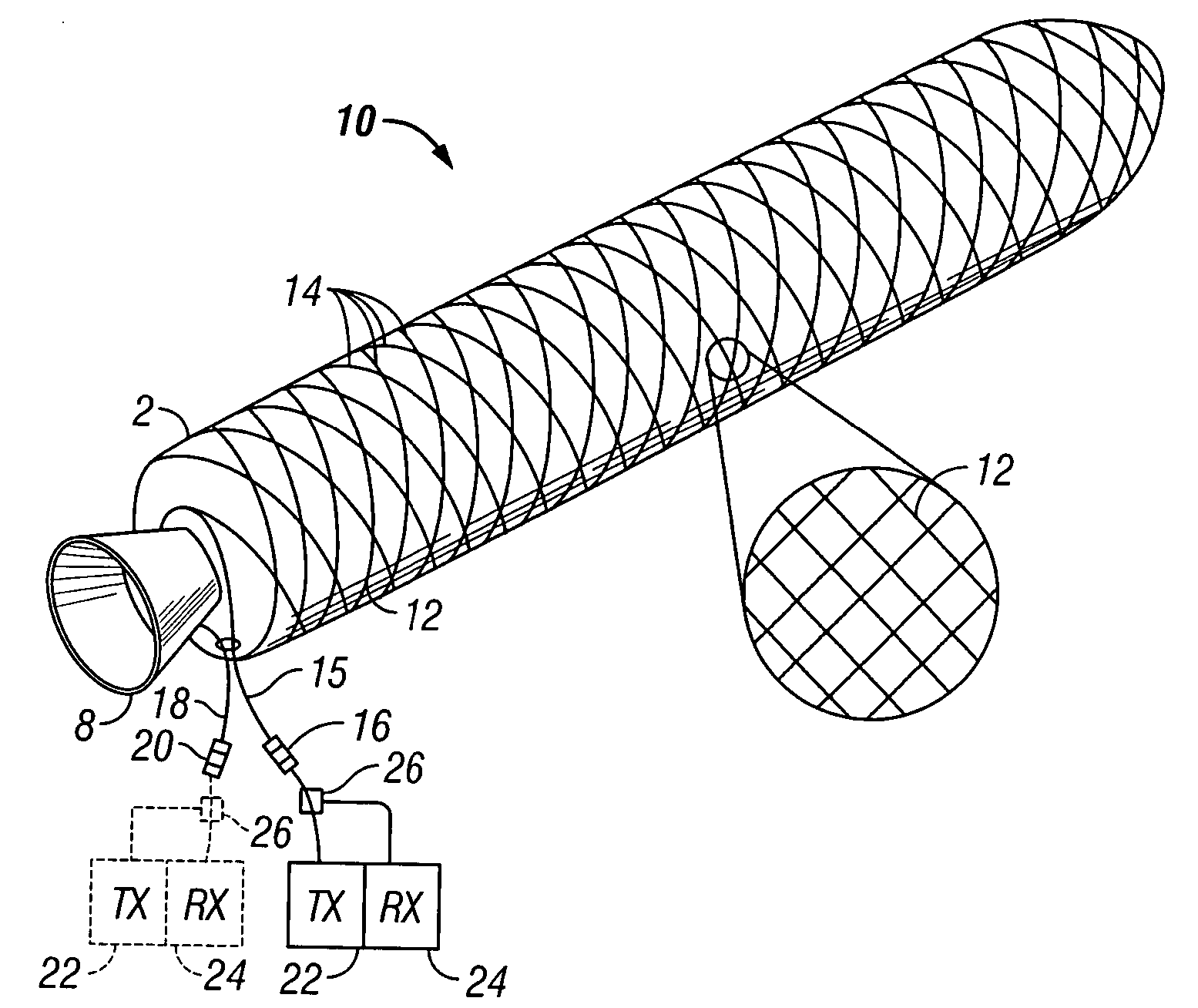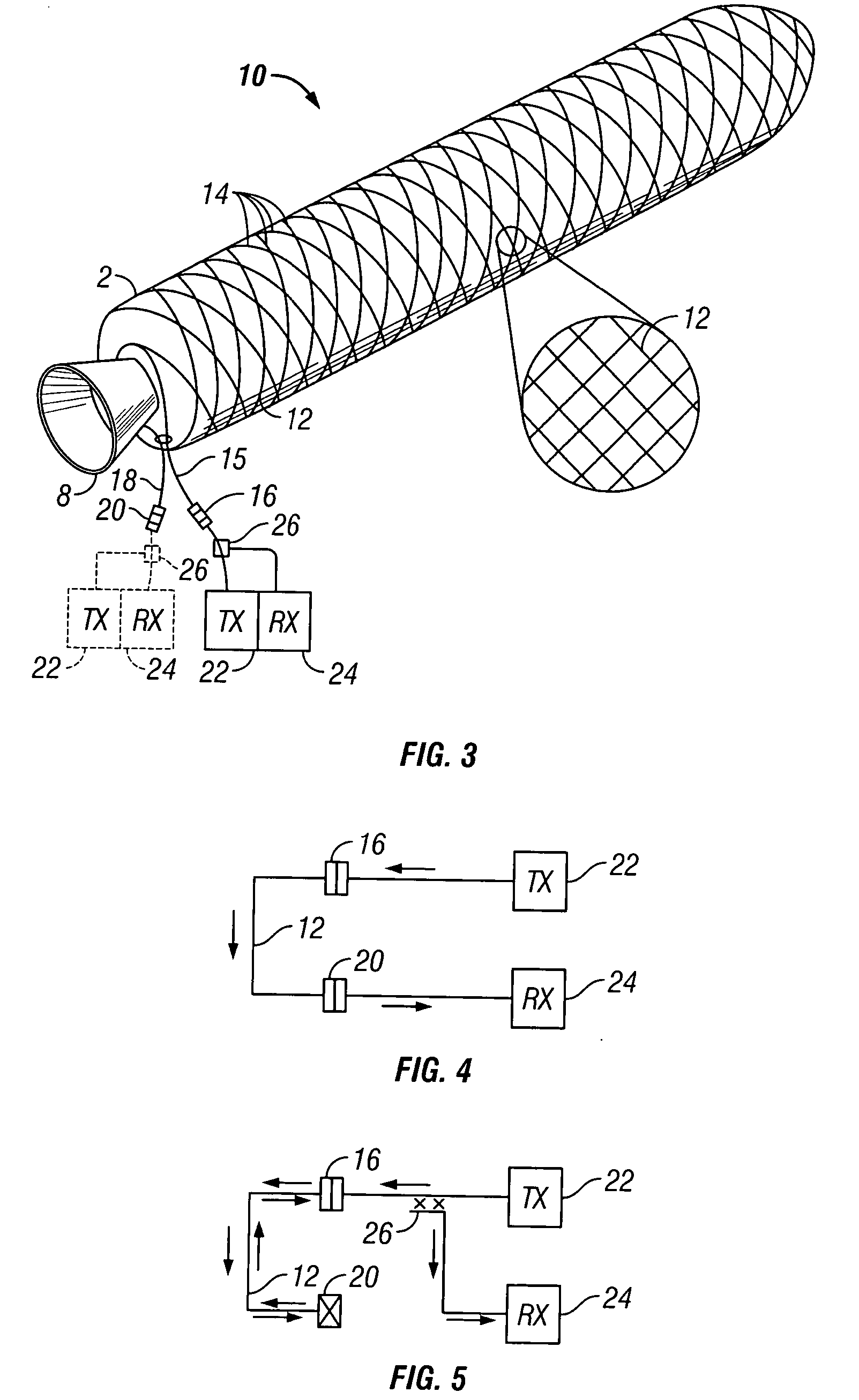Fiber optic damage detection system for composite pressure vessels
a composite pressure vessel and fiber optic technology, applied in optical radiation measurement, transmission monitoring, instruments, etc., can solve the problems of reduced strength of composite structures, relatively susceptible to shock and impact damage, and broken fibers, and achieve the effect of low cos
- Summary
- Abstract
- Description
- Claims
- Application Information
AI Technical Summary
Benefits of technology
Problems solved by technology
Method used
Image
Examples
Embodiment Construction
[0021] A filament-wound composite structure 2, viz., a composite overwrapped pressure vessel, or COPV, to which the present invention has advantageous application, is illustrated in the perspective view of FIG. 2. The particular composite pressure vessel illustrated comprises a liquid propellant tank, and includes a hollow, generally cylindrical, polymeric or metallic, e.g., plastic, titanium, aluminum or stainless steel, inner liner 4, such as that illustrated in FIG. 1. While the liner is shown as cylindrical in shape, it should be understood that such a liner may have many other shapes, including, e.g., oblate spheroids, “near spheres,” or spheres. The underlying mandrel for the composite pressure vessel could also be a solid propellant casting or a mechanically removable or dissolvable structure (e.g., salt or plaster) that is not an integral component of the final pressure vessel.
[0022] The exterior surface of the liner 4 may be densely over-wound in a helical and / or longitudi...
PUM
 Login to View More
Login to View More Abstract
Description
Claims
Application Information
 Login to View More
Login to View More - R&D
- Intellectual Property
- Life Sciences
- Materials
- Tech Scout
- Unparalleled Data Quality
- Higher Quality Content
- 60% Fewer Hallucinations
Browse by: Latest US Patents, China's latest patents, Technical Efficacy Thesaurus, Application Domain, Technology Topic, Popular Technical Reports.
© 2025 PatSnap. All rights reserved.Legal|Privacy policy|Modern Slavery Act Transparency Statement|Sitemap|About US| Contact US: help@patsnap.com



